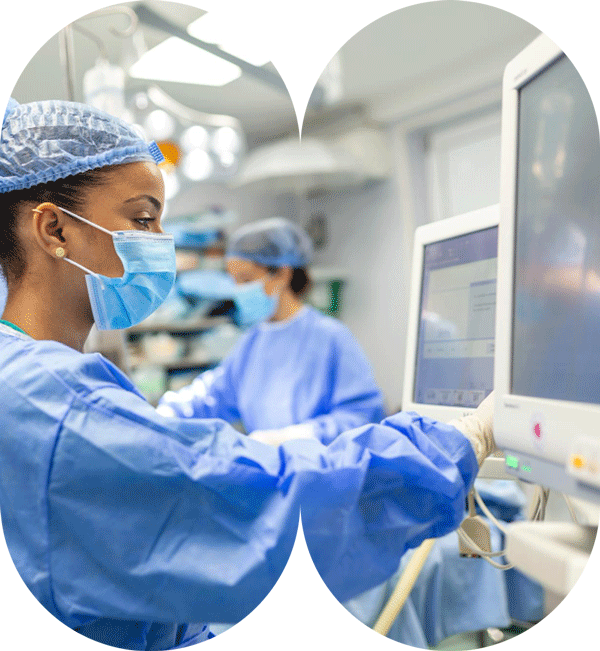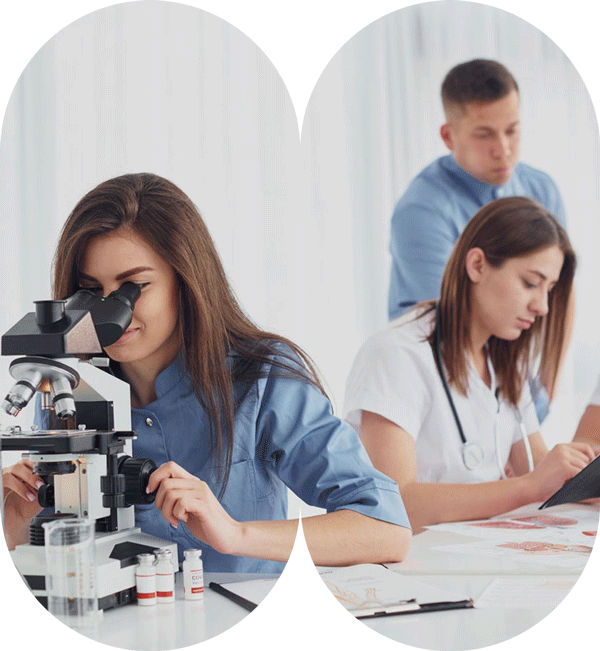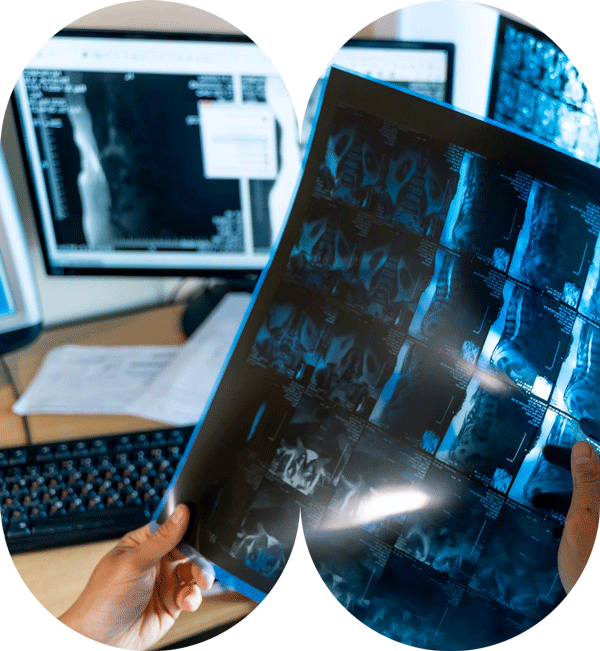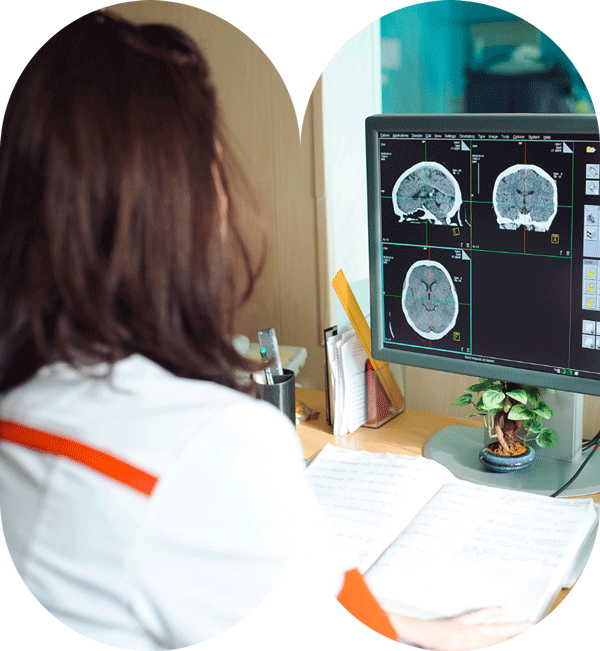Paramedic Science
We offer a wide range of dynamic courses that cater to your unique educational and career goals.

Senior Care Assistant
A vital member of the healthcare team, a senior care assistant (also referred to as a senior care worker or elder care assistant) specializes in providing essential care and support to older individuals. Their expertise is utilized in diverse healthcare environments, including hospitals, nursing homes, assisted living facilities, and home healthcare agencies.
In their role, senior care assistants offer a comprehensive range of services aimed at enhancing the well-being of elderly individuals. They are pivotal in empowering seniors to maintain their independence and enjoy a high quality of life. Additionally, senior care assistants provide crucial respite care and various forms of assistance, offering much-needed support to both the seniors and their families.
Diploma in Senior Care Assistant - Benefits
A Diploma in Senior Care Assistant is a post-secondary program that prepares students for careers in the field of senior care. Senior care assistants, also known as personal care assistants or home health aides, provide personal care and assistance to seniors and adults with disabilities. They may help with activities of daily living (ADLs), such as bathing, dressing, and eating. They may also provide companionship and emotional support.
What does a Diploma in Senior Care Assistant program cover?
A typical Diploma in Senior Care Assistant program will cover the following topics:
- The foundations of senior care,including the anatomy and physiology of the human body, common health conditions affecting seniors, and communication and conflict resolution skills.
- ADL care, including bathing, dressing,grooming, feeding, and toileting.
- Home management skills, such as meal planning and preparation, light housekeeping, and laundry.
- Medication administration and first aid.
- Professionalism and ethics.
Some programs may also offer specialized courses in areas such as dementia care, hospice care, or Parkinson's disease care.
What are the benefits of a Diploma in Senior Care Assistant?
There are many benefits to pursuing a Diploma in Senior Care Assistant, including:
- Increased earning potential: Senior care assistants typically earn a good salary.The median annual wage for personal care aides and home health aides was $27,160 in May 2021.
- Job security: The job outlook for senior care assistants is expected to grow much faster than average over the next decade. This is due to the aging population and the increasing demand for senior care services.
- Rewarding career: Senior care assistants have the opportunity to make a real difference in the lives of their clients. They provide companionship and support to seniors and adults with disabilities, and they help them to maintain their independence and quality of life.
Who is a good candidate for a Diploma in Senior Care Assistant program?
A good candidate for a Diploma in Senior Care Assistant program is someone who is:
- Patient and compassionate
- Able to work independently and as part of a team
- Able to follow instructions carefully
- Physically able to provide ADL care
- Able to work with clients who may have cognitive or physical impairments
Global universities offering this course:
- Open University (United Kingdom)
- Penn Foster (United States)
- American Skill University ( United States)
- Health Education Institute (Global)
- Institute of Medical Education (Global)
Diploma in Senior Care Assistant - Syllabus
Semester 1
Module 1: Introduction to Senior Care
What is senior care?
The different types of senior care settings
The role of the senior care assistant
The needs of the elderly population
Ethical considerations in senior care
Module 2: Anatomy and Physiology
The anatomy and physiology of the aging body
Common health conditions among the elderly
Medications and the elderly
Nutrition and the elderly
Module 3: Activities of Daily Living (ADLs)
The different ADLs
How to assist seniors with ADLs
Promoting independence in seniors
Module 4: Communication and Relationships
Effective communication with seniors
Building relationships with seniors and their families
Managing difficult situations
Module 5: Workplace Safety
Workplace safety hazards in senior care
How to prevent workplace injuries
Infection control in senior care
Semester 2
Module 6: Dementia Care
The different types of dementia
The signs and symptoms of dementia
How to care for people with dementia
Module 7: End-of-Life Care
The different stages of dying
Palliative and hospice care
Supporting the dying and their families
Module 8: Professional Development
Networking and building relationships in the senior care industry
Continuing professional development in senior care
Building your personal brand as a senior care professional
Reference Books:
The Senior Care Assistant's Handbook by Linda Sklenarik
Geriatric Nursing: Principles and Practice by Sharon L. Johnson and Linda S. Johnson-Taylor
Dementia Care: A Clinical Handbook by John Killick and Peter Whitehouse
End-of-Life Care: A Comprehensive Handbook for Professionals and Families by Barbara Karnes
Professional Nursing: Concepts and Challenges by Patricia Potter and Anne Griffin Perry
Journals:
Journal of Gerontological Nursing
Geriatrics
Alzheimer's & Dementia
Journal of Palliative Medicine
Nursing Times
Related Websites:
National Association of Home Care & Hospice (NAHC)
American Association of Retired Persons (AARP)
Alzheimer's Association
National Hospice and Palliative Care Organization (NHPCO)
American Nurses Association (ANA)
Useful YouTube Links:
Caring for Seniors
Alzheimer's Association
National Hospice and Palliative Care Organization
American Nurses Association
National Association of Home Care & Hospice
Ted Talks:
The Future of Aging by Laura Carstensen
The Power of Touch in Dementia Care by Tiffany Shlain
The Importance of Senior Care Assistants by Angela Duckworth
The Ethics of End-of-Life Care by Atul Gawande
The Role of Senior Care in Society by Jane Fonda
Audio Books:
The Senior Care Assistant's Handbook by Linda Sklenarik
Geriatric Nursing: Principles and Practice by Sharon L. Johnson and Linda S. Johnson-Taylor
Dementia Care: A Clinical Handbook by John Killick and Peter Whitehouse
End-of-Life Care: A Comprehensive Handbook for Professionals and Families by Barbara Karnes
Professional Nursing: Concepts and Challenges by Patricia Potter and Anne Griffin Perry
Operation Theatre Technology
At the heart of modern healthcare, you’ll find the dynamic field of Operation Theatre Technology, commonly referred to as Surgical Technology. This profession is dedicated to the intricate interplay of cutting-edge technology, crucial equipment, and streamlined processes within the operating rooms (ORs).
Operation Theatre Technicians, also known as Surgical Technologists, hold pivotal roles within surgical teams. They bear the essential responsibility of ensuring the seamless and safe execution of surgical procedures. This involves a range of critical tasks, including the meticulous preparation and sterilization of surgical instruments and equipment, the precise setup and maintenance of the operating room, active assistance to the surgeon during procedures, efficient management of surgical supplies, and the comprehensive documentation of each surgical intervention.


Diploma in Operation Theatre Technology - Benefits
A Diploma in Operation Theatre Technology (OTT) is a post-secondary program that prepares students for careers as surgical technologists. Surgical technologists, also known as operating room (OR) techs, are allied health professionals who assist surgeons during surgery. They are responsible for preparing the operating room, setting up and maintaining surgical instruments, and passing instruments to the surgeon during surgery.
The program typically covers a wide range of topics, including:
- The principles and practices of surgical asepsis
- The anatomy and physiology of the human body
- Surgical equipment and instrumentation
- Surgical procedures
- Patient care and safety
Students may also have the opportunity to specialize in a particular area of surgical technology, such as cardiac surgery, neurosurgery, or Orthopaedic Surgery.
Benefits of a Diploma in Operation Theatre Technology
There are many benefits to pursuing a Diploma in Operation Theatre Technology, including:
- Increased earning potential: Surgical technologists typically earn a good salary. The median annual wage for surgical technologists was $48,510 in May 2021.
- Job security: The job outlook for surgical technologists is expected to grow much faster than average over the next decade. This is due to the increasing demand for surgical services as the population ages.
- Rewarding career: Surgical technologists play a vital role in helping surgeons perform surgery safely and effectively. They have the opportunity to make a real difference in the lives of their patients.
Demand for Surgical Technologists
The demand for surgical technologists is growing rapidly. This is due to a number of factors, including:
- The aging population: The population is aging, and older adults are more likely to need surgery.
- The increasing prevalence of chronic diseases: The prevalence of chronic diseases, such as cancer and heart disease, is increasing. These diseases often require surgery for treatment.
- The development of new surgical procedures: New surgical procedures are being developed all the time. These new procedures require skilled surgical technologists to assist the surgeon
Global universities offering this course:
- Griffith University (Australia)
- Curtin University (Australia)
- University of Wollongong (Australia)
- American Skill University ( United States)
- Keiser University (United States)
- Middle Tennessee State University(United States)
- University of Maryland Global Campus(United States)
Diploma in Operation Theatre Technology - Syllabus
Semester 1
Module 1: Introduction to Operation Theatre Technology
What is operation theatre technology?
The different types of surgeries
The role of the operation theatre technician
The different types of operation theatre equipment
Operation theatre safety
Module 2: Anatomy and Physiology
The anatomy and physiology of the human body
The different surgical procedures
The role of the operation theatre technician in each surgical procedure
Module 3: Sterilization and Disinfection
The principles of sterilization and disinfection
The different types of sterilization and disinfection methods
The role of the operation theatre technician in sterilization and disinfection
Module 4: Surgical Instruments and Equipment
The different types of surgical instruments and equipment
The care and maintenance of surgical instruments and equipment
The role of the operation theatre technician in managing surgical instruments and equipment
Module 5: Patient Care
Preoperative patient care
Intraoperative patient care
Postoperative patient care
The role of the operation theatre technician in patient care
Semester 2
Module 6: Anesthesia
The principles of anesthesia
The different types of anesthesia
The role of the operation theatre technician in anesthesia
Module 7: Surgical Procedures
The different types of surgical procedures
The role of the operation theatre technician in each surgical procedure
Module 8: Operating Room Management
The principles of operating room management
The different types of operating rooms
The role of the operation theatre technician in operating room management
Module 9: Quality Assurance
The importance of quality assurance in operation theatre technology
The different quality assurance procedures used in operation theatre technology
The role of the operation theatre technician in quality assurance
Module 10: Operation Theatre Professional Development
Networking and building relationships in the operation theatre technology industry
Continuing professional development in operation theatre technology
Building your personal brand as an operation theatre professional
Reference Books:
Essentials of Operation Theatre Technology by S.P. Basavanthappa
Textbook of Operation Theatre Technology by Sushma S. Kale
Operation Theatre Technology and Management by G. Vijayakrishnan
Surgical Technology: Principles and Practice by Joanna Kotcher Fuller
Alexander's Surgical Procedures by Norman S. Williams and John L. Cameron
Journals:
Journal of Operating Room Nursing
AORN Journal
Surgical Technology International
Association of Surgical Technologists Journal
International Journal of Surgical Technology
Related Websites:
Association of Surgical Technologists (AST)
National Association of Operating Room Technicians (NAORT)
Association of Operating Room Nurses (AORN)
Association of Surgical Technologists and Technicians of Canada (ASTTEC)
International Federation of Surgical Technology (IFST)
Useful YouTube Links:
Surgical Technology International
AORN
AST
Kenhub
AnatomyZone
Ted Talks:
The Future of Surgery by Sanjay Gupta
The Power of Robotics in Surgery by David Nott
The Importance of Surgical Technologists by Susannah Fox
The Ethics of Surgical Innovation by Arthur Caplan
The Role of Surgical Technology in Global Health by Atul Gawande
Audio Books:
Essentials of Operation Theatre Technology by S.P. Basavanthappa
Textbook of Operation Theatre Technology by Sushma S. Kale
Operation Theatre Technology and Management by G. Vijayakrishnan
Surgical Technology: Principles and Practice by Joanna Kotcher Fuller
Alexander's Surgical Procedures by Norman S. Williams and John L. Cameron

Medical Lab Technology
In the realm of healthcare, the discipline of Medical Laboratory Technology (MLT) takes center stage. This profession is dedicated to the precise analysis of diverse specimens, such as body fluids, tissues, and other substances, serving as a cornerstone in the diagnosis and ongoing monitoring of diseases.
Within this realm, Medical Laboratory Technicians, also known as Clinical Laboratory Technicians (CLTs), emerge as indispensable members of the healthcare team. Their pivotal role lies in furnishing the team with timely and accurate laboratory results. This encompasses a wide spectrum of tests, including but not limited to blood tests, urine tests, microbiology assessments, immunology investigations, and chemistry analyses. The essence of their work lies in meticulous adherence to procedures, ensuring precision, and the accurate interpretation of test results, thus contributing significantly to patient care and medical decision-making.
Diploma in Medical Lab Technology - Benefits
A Diploma in Medical Lab Technology (DMLT) is a two- to three-year diploma course that teaches students the skills and knowledge necessary to work in a medical laboratory. Medical laboratory technicians play a vital role in the healthcare system by performing a variety of tests and procedures on blood, urine, and other bodily fluids to help diagnose and monitor diseases and conditions.
Course Content
The DMLT curriculum typically includes courses in the following areas:
- Basic medical sciences: anatomy,physiology, biochemistry, microbiology,immunology, and pathology
- Clinical laboratory techniques:hematology, urinalysis, blood chemistry,bacteriology, and immunology
- Quality control and safety: quality control procedures, safety protocols,and ethical considerations
Global Universities Offering the DMLT Course
Here is a list of some global universities offering the Diploma in Medical Lab Technology course:
- Australia: University of Melbourne,University of Queensland
- Canada: Ryerson University, University of Toronto
- United States: American Skill University
- New Zealand: Auckland University of Technology, University of Otago,
- United Kingdom: University of Leeds,University of Manchester,
Career Opportunities
After completing a Diploma in Medical Lab Technology, graduates can work in a variety of settings, including hospitals, clinics, public health laboratories, and private laboratories. Medical laboratory technicians may also work in research or academia.
Conclusion
A Diploma in Medical Lab Technology is a rewarding career path for those who are interested in science and healthcare. Graduates of DMLT programs are in high demand around the world, and the field is expected to continue to grow in the coming years.
Diploma in Medical Lab Technology - Syllabus
Semester 1
Module 1: Introduction to Medical Lab Technology
What is medical lab technology?
The different types of medical lab tests
The importance of medical lab tests
Career opportunities in medical lab technology
Professional ethics and conduct
Module 2: Clinical Chemistry
The composition of blood
The different blood chemistry tests
The interpretation of blood chemistry results
Module 3: Hematology
The different types of blood cells
The different blood cell disorders
The interpretation of hematology results
Module 4: Microbiology
The different types of microorganisms
The different types of infections
The identification and diagnosis of infections
Module 5: Immunology
The immune system
The different types of immunological tests
The interpretation of immunological results
Semester 2
Module 6: Clinical Biochemistry
The different types of body fluids
The different body fluid tests
The interpretation of body fluid results
Module 7: Histopathology
The different types of tissues
The different tissue disorders
The interpretation of histopathology results
Module 8: Molecular Diagnostics
The principles of molecular diagnostics
The different types of molecular diagnostic tests
The interpretation of molecular diagnostic results
Module 9: Quality Assurance
The importance of quality assurance in medical lab technology
The different quality assurance procedures used in medical lab technology
Module 10: Medical Lab Professional Development
Networking and building relationships in the medical lab technology industry
Continuing professional development in medical lab technology
Building your personal brand as a medical lab professional
Reference Books:
Clinical Chemistry: Principles, Procedures, Correlations by Michael L. Bishop, Edward P. Fody, and Larry E. Schoeff
Hematology: Basic Principles and Practice by Bernadette G. Hoffbrand, Edward A. Ponka, and Tony H.J. Pettit
Basic Medical Microbiology by Patrick R. Murray, Ken S. Rosenthal, and Michael A. Pfaller
Janeway's Immunobiology by Kenneth Murphy and Casey Weaver
Wheater's Pathology: A Text and Colour Atlas by Barbara Young, John Lowe, and Alan Stevens
Journals:
Clinical Chemistry
American Journal of Clinical Pathology
Journal of Clinical Microbiology
Clinical Immunology
Laboratory Medicine
Related Websites:
American Society for Clinical Laboratory Science (ASCLS)
American Medical Technologists (AMT)
Clinical and Laboratory Standards Institute (CLSI)
College of American Pathologists (CAP)
National Accrediting Agency for Clinical Laboratory Sciences (NAACLS)
Useful YouTube Links:
MedTech with Nick
Lab Medic
Kenhub
AnatomyZone
Physiology Zone
Ted Talks:
The Future of Medical Diagnostics by Elizabeth Holmes
The Power of Precision Medicine by Eric Lander
The Importance of Medical Lab Technologists by Mary Jo Canary
The Ethics of Genetic Testing by Kathy Hudson
The Role of Medical Labs in Public Health by Thomas Frieden
Audio Books:
Clinical Chemistry: Principles, Procedures, Correlations by Michael L. Bishop, Edward P. Fody, and Larry E. Schoeff
Hematology: Basic Principles and Practice by Bernadette G. Hoffbrand, Edward A. Ponka, and Tony H.J. Pettit
Basic Medical Microbiology by Patrick R. Murray, Ken S. Rosenthal, and Michael A. Pfaller
Janeway's Immunobiology by Kenneth Murphy and Casey Weaver
Wheater's Pathology: A Text and Colour Atlas by Barbara Young, John Lowe, and Alan Stevens
Recently Updated Content
X-Ray Technology
Within the healthcare domain, X-ray Technology takes center stage as a profession with profound significance. This field harnesses the power of X-rays to generate detailed images of the body’s internal structures. Operating under the title of X-ray Technicians, or radiographers, these professionals are key contributors to the healthcare team, entrusted with the responsibility of delivering precise and timely X-ray images that are instrumental in diagnosis and medical decision-making.

Diploma in X-Ray Technology - Benefits
Course Introduction
A Diploma in X-Ray Technology (DXRT) is a two- to three-year diploma course that teaches students the skills and knowledge necessary to work as radiographers. Radiographers use X-rays to produce images of the inside of the body, which are used to diagnose and monitor diseases and conditions.
Course Content
The DXRT curriculum typically includes courses in the following areas:
- Basic medical sciences: anatomy,physiology, biochemistry, and radiation physics
- X-ray imaging techniques: positioning and immobilization techniques, and radiation protection procedures
- Image processing and analysis: image quality control and evaluation
In addition to these core courses, students may also take electives in specialized areas, such as:
- Cross-sectional imaging: computed tomography (CT) and magnetic resonance imaging (MRI)
- Mammography: X-ray imaging of the breasts
- Interventional radiology: X-ray-guided procedures, such as biopsies and injections
Clinical Training
DXRT programs typically include a clinical internship component, where students will gain hands-on experience working in a real-world setting. Internships are typically completed in hospitals, clinics, or imaging centers.
Job Outlook
The job outlook for radiographers is excellent. The U.S. Bureau of Labor Statistics projects that employment of radiographers will grow by 7% from 2020 to 2030, much faster than the average for all occupations. This growth is attributed to the aging population and the increasing use of medical imaging to diagnose and monitor diseases and conditions.
Global Universities Offering the DXRT Course
Here is a list of some global universities offering the Diploma in X-Ray Technology course:
- Australia:
- University of Melbourne
- University of Sydney
- Canada:
- University of British Columbia
- University of Toronto
- United States :
- American Skill University
- New Zealand:
- Auckland University of Technology
- Victoria University of Wellington
- United Kingdom:
- University of Manchester
- University of Nottingham
Please note that this is not an exhaustive list, and there are many other universities around the world that offer the Diploma in X-Ray Technology course.
Conclusion
A Diploma in X-Ray Technology is a rewarding career path for those who are interested in science and healthcare. Radiographers play a vital role in the healthcare system by providing high-quality images that are essential for accurate diagnosis and treatment. Graduates of DXRT programs are in high demand around the world, and the field is expected to continue to grow in the coming years.
Diploma in X-Ray Technology - Syllabus
Semester 1
Module 1: Introduction to X-Ray Technology
What is X-ray technology?
The different types of X-ray machines
The principles of X-ray imaging
The benefits and risks of X-ray imaging
Career opportunities in X-ray technology
Professional ethics and conduct
Module 2: Radiation Physics and Biology
The different types of radiation used in X-ray imaging
The biological effects of radiation
Radiation safety
Module 3: Radiographic Anatomy and Physiology
The anatomy and physiology of the human body
The different X-ray projections used to image different parts of the body
X-ray contrast media
Module 4: Radiographic Positioning and Technique
The different positioning and technique factors used to produce high-quality X-ray images
Patient care and safety
Module 5: Radiographic Image Evaluation
The different types of X-ray artifacts and how to identify them
The different X-ray findings associated with common diseases and injuries
Semester 2
Module 6: Advanced X-Ray Imaging
Mammography
Computed tomography (CT)
Magnetic resonance imaging (MRI)
Ultrasound
Nuclear medicine
Module 7: Radiologic Reporting
The different components of a radiologic report
How to write a clear and concise radiologic report
Module 8: Radiologic Quality Assurance
The importance of quality assurance in X-ray technology
The different quality assurance procedures used in X-ray technology
Module 9: Radiologic Informatics
The role of informatics in X-ray technology
The different types of radiologic information systems (RIS) and picture archiving and communication systems (PACS)
Module 10: X-Ray Professional Development
Networking and building relationships in the X-ray technology industry
Continuing professional development in X-ray technology
Building your personal brand as an X-ray professional
Reference Books:
Fundamentals of Radiography by Eric J. Bogart, John L. Parker, and Michael B. Zimmerman
Radiographic Anatomy and Physiology by Kenneth L. Bontrager and John T. Lampignano
Radiographic Positioning and Techniques by Kenneth L. Bontrager and John T. Lampignano
Radiologic Imaging: The Requisites by Terry R. Ritenour
Essentials of Nuclear Medicine Imaging by Fred A. Mettler, Jr. and Mark T. Madsen
Journals:
American Journal of Roentgenology
Radiology
Radiologic Clinics of North America
Journal of Magnetic Resonance Imaging
Ultrasound Quarterly
Related Websites:
American College of Radiology
Radiological Society of North America
Association of Radiologic Technologists
American Society of Radiologic Technologists
Society of Nuclear Medicine and Molecular Imaging
Useful YouTube Links:
Radiology Exam Review
Radiopaedia
Kenhub
AnatomyZone
MRI Made Easy
Ted Talks:
The Future of Medical Imaging by Jeff Dean
The Power of Radiology to Save Lives by David Brenner
The Importance of Radiologic Technologists by Donna Sweet
The Ethics of Medical Imaging by Daniel Kahneman
The Role of Radiology in Public Health by Rebecca Smith-Bindman
Audio Books:
Fundamentals of Radiology by Eric J. Bogart, John L. Parker, and Michael B. Zimmerman
Radiographic Anatomy and Physiology by Kenneth L. Bontrager and John T. Lampignano
Radiographic Positioning and Techniques by Kenneth L. Bontrager and John T. Lampignano
Radiologic Imaging: The Requisites by Terry R. Ritenour
Essentials of Nuclear Medicine Imaging by Fred A. Mettler, Jr. and Mark T. Madsen

Radiology & Medical Imaging Technology
Radiology and medical imaging technology is a broad field that encompasses the use of a variety of imaging techniques to diagnose and treat diseases. Radiology technicians, also known as radiologic technologists or radiographers, play a vital role in the healthcare team by providing accurate and timely images of the body’s internal structures.
Diploma in Radiology and Medical Imaging - Benefits
A Diploma in Radiology and Medical Imaging is a post-secondary program that prepares students for careers in the field of radiology and medical imaging. Radiology and medical imaging is the use of non-invasive procedures to create images of the inside of the human body. These images can be used to diagnose diseases and injuries, guide treatments, and monitor the progress of treatments.
The program typically covers a wide range of topics, including:
- The fundamentals of radiology and medical imaging
- The different types of medical imaging modalities, such as X-ray, ultrasound,CT scan, and MRI
- How to produce and interpret medical images
- How to use medical imaging equipment
- Patient care and safety
Students may also have the opportunity to specialize in a particular area of radiology and medical imaging, such as radiography, mammography, or ultrasound.
Benefits of a Diploma in Radiology and Medical Imaging
There are many benefits to pursuing a Diploma in Radiology and Medical Imaging, including:
- Increased earning potential:Radiographers and medical imaging technologists typically earn a good salary. The median annual wage for radiographers was $62,270 in May 2021, and the median annual wage for medical imaging technologists was $61,040 in May 2021.
- Job security: The job outlook for radiographers and medical imaging technologists is expected to grow much faster than average over the next decade. This is due to the increasing demand for medical imaging services as the population ages.
- Rewarding career: Radiographers and medical imaging technologists play a vital role in helping doctors diagnose and treat patients. They have the opportunity to make a real difference in the lives of their patients.
Demand for Radiographers and Medical Imaging Technologists
The demand for radiographers and medical imaging technologists is growing rapidly. This is due to a number of factors, including:
- The aging population: The population is aging, and older adults are more likely to need medical imaging services.
- The increasing prevalence of chronic diseases: The prevalence of chronic diseases, such as cancer and heart disease, is increasing. These diseases often require medical imaging for diagnosis and monitoring.
- The development of new medical imaging technologies: New medical imaging technologies are being developed all the time. These new technologies allow doctors to see inside the body in more detail and accuracy than ever before.
Global universities offering this course:
- Keiser University (United States)
- University of Galway (Ireland)
- University of Newcastle (Australia)
- American Skill University ( United States)
- Charles Sturt University (Australia)
- Curtin University (Australia)
- Griffith University (Australia)
- University of Southern Queensland(Australia)
Diploma in Radiology and Medical Imaging - Syllabus
Semester 1
Module 1: Introduction to Radiology and Medical Imaging
What is radiology and medical imaging?
The different types of radiology and medical imaging procedures
The benefits and risks of radiology and medical imaging procedures
Career opportunities in radiology and medical imaging
Professional ethics and conduct
Module 2: Radiation Physics and Biology
The different types of radiation used in radiology and medical imaging
The biological effects of radiation
Radiation safety
Module 3: Radiographic Anatomy and Physiology
The anatomy and physiology of the human body
The different radiographic projections used to image different parts of the body
Radiographic contrast media
Module 4: Radiographic Positioning and Technique
The different positioning and technique factors used to produce high-quality radiographic images
Patient care and safety
Module 5: Radiographic Image Evaluation
The different types of radiographic artifacts and how to identify them
The different radiographic findings associated with common diseases and injuries
Semester 2
Module 6: Advanced Radiographic Imaging
Mammography
Computed tomography (CT)
Magnetic resonance imaging (MRI)
Ultrasound
Nuclear medicine
Module 7: Radiologic Reporting
The different components of a radiologic report
How to write a clear and concise radiologic report
Module 8: Radiologic Quality Assurance
The importance of quality assurance in radiology and medical imaging
The different quality assurance procedures used in radiology and medical imaging
Module 9: Radiologic Informatics
The role of informatics in radiology and medical imaging
The different types of radiologic information systems (RIS) and picture archiving and communication systems (PACS)
Module 10: Radiologic Professional Development
Networking and building relationships in the radiology and medical imaging industry
Continuing professional development in radiology and medical imaging
Building your personal brand as a radiology and medical imaging professional
Reference Books:
Fundamentals of Radiology by Eric J. Bogart, John L. Parker, and Michael B. Zimmerman
Radiographic Anatomy and Physiology by Kenneth L. Bontrager and John T. Lampignano
Radiographic Positioning and Techniques by Kenneth L. Bontrager and John T. Lampignano
Radiologic Imaging: The Requisites by Terry R. Ritenour
Essentials of Nuclear Medicine Imaging by Fred A. Mettler, Jr. and Mark T. Madsen
Journals:
American Journal of Roentgenology
Radiology
Radiologic Clinics of North America
Journal of Magnetic Resonance Imaging
Ultrasound Quarterly
Related Websites:
American College of Radiology
Radiological Society of North America
Association of Radiologic Technologists
American Society of Radiologic Technologists
Society of Nuclear Medicine and Molecular Imaging
Useful YouTube Links:
Radiology Exam Review
Radiopaedia
Kenhub
AnatomyZone
MRI Made Easy
Ted Talks:
The Future of Medical Imaging by Jeff Dean
The Power of Radiology to Save Lives by David Brenner
The Importance of Radiologic Technologists by Donna Sweet
The Ethics of Medical Imaging by Daniel Kahneman
The Role of Radiology in Public Health by Rebecca Smith-Bindman
Audio Books:
Fundamentals of Radiology by Eric J. Bogart, John L. Parker, and Michael B. Zimmerman
Radiographic Anatomy and Physiology by Kenneth L. Bontrager and John T. Lampignano
Radiographic Positioning and Techniques by Kenneth L. Bontrager and John T. Lampignano
Radiologic Imaging: The Requisites by Terry R. Ritenour
Essentials of Nuclear Medicine Imaging by Fred A. Mettler, Jr. and Mark T. Madsen